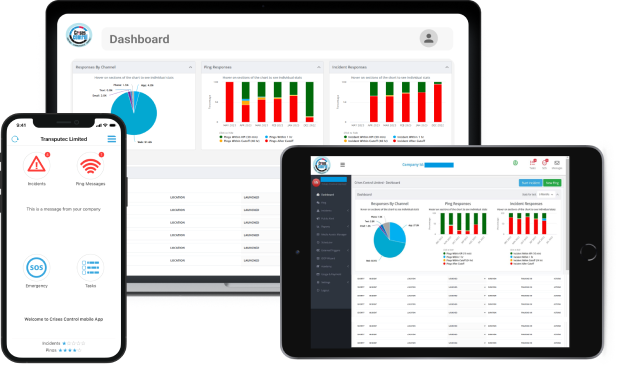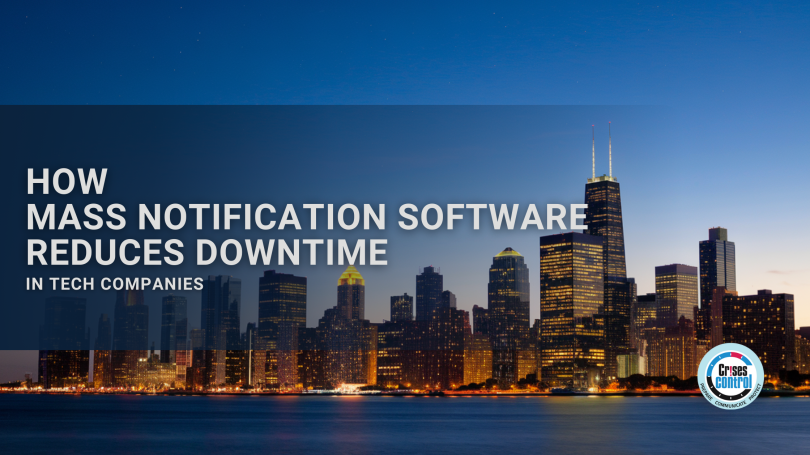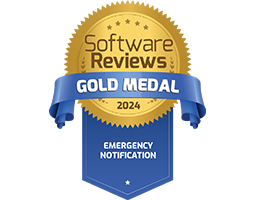Written by Anneri Fourie | Crises Control Executive
Why Every Second of Downtime Matters: The Importance of Mass Notification Software
Imagine this: your cloud-based service goes down during peak hours. Thousands of customers are locked out, transactions fail, and support teams are overwhelmed with complaints. Without a clear response plan, your IT team scrambles to identify the issue while customers vent their frustrations online. This is more than just an inconvenience, it’s a serious financial and reputational risk.
For tech companies, downtime means lost revenue, frustrated customers, and damage to your brand’s reputation. In fact, studies show that downtime costs tech companies an average of $5,600 per minute, which can lead to significant financial losses and operational disruptions. And the longer it takes to respond, the worse the impact.
But what if there was a way to reduce downtime quickly and efficiently? The solution isn’t just about fixing problems faster, it’s about coordinating response efforts immediately. This is where Mass Notification Software comes in. It ensures that IT teams, senior management, and key stakeholders are instantly alerted when something goes wrong, so they can take immediate action.
In this blog, we’ll explore the real costs of downtime for tech companies, explore how Mass Notification Software can enhance incident response, and highlight how Crises Control helps businesses restore services quickly and efficiently.
The Hidden Costs of Downtime in the Tech Industry
The financial impact of downtime is obvious, but the true cost goes far beyond lost revenue. Let’s break it down:
1. Revenue Losses That Add Up Quickly
For SaaS platforms, e-commerce sites, or cloud services, every second of downtime results in lost sales, failed transactions, and potential contract breaches. A single major outage can cost millions, especially for companies relying on subscription models or real-time transactions. Even a short period of downtime can lead to significant financial losses.
Take, for example, a major cloud service provider that experiences an outage during peak business hours. Within hours, they’ve lost thousands of dollars in revenue. When this happens multiple times a year, the total cost can be devastating.
2. Damaged Customer Trust and Brand Reputation
Reliability is key for tech companies. When a service unexpectedly goes down, and there’s no clear communication, customers lose trust in your brand. A brief outage can lead to negative press, complaints on social media, and long-term customer churn.
A major tech company can bounce back from a few minutes of downtime, but for smaller businesses, even a few seconds without service could damage their reputation beyond repair.
3. Delayed Incident Response Increases Downtime
Without a structured incident response plan in place, IT teams might not even realise there’s an issue until customers start complaining. If key personnel aren’t notified immediately, valuable time is wasted trying to coordinate a response manually.
This lack of coordination results in delayed actions and prolonged downtime, which compounds the problem.
4. Operational Disruptions Across the Business
Downtime doesn’t only affect customers, it has a ripple effect on internal teams too. Support teams become overwhelmed with complaints, sales teams miss out on opportunities, and IT teams face unnecessary pressure when communication is uncoordinated.
With a proper response plan, these disruptions can be minimised, allowing your team to focus on solving the problem instead of scrambling to communicate.
How Mass Notification Software Reduces Downtime
When an incident occurs, every second counts. Mass Notification Software ensures the right people are alerted immediately, helping tech companies restore services faster. Here’s how:
1. Instant Multi-Channel Alerts for Rapid Response
When a system failure occurs, IT teams need instant notifications; emails might be missed, or calls could go unnoticed. Mass Notification Software ensures alerts are delivered across multiple channels:
- SMS
- Push notifications
- Voice calls
- Desktop alerts
With Crises Control, our Ping Mass Notification tool ensures critical alerts reach IT teams within seconds. Pre-configured messages allow teams to trigger alerts automatically, and notifications are prioritised so that urgent incidents are addressed first. With instant alerts, response times improve dramatically, and downtime is reduced.
Interested in our Ping Mass Notification Software?
Efficiently alert everyone in seconds at scale with our Mass Notification Software – PING, get the message out fast and ensure rapid response and recovery.
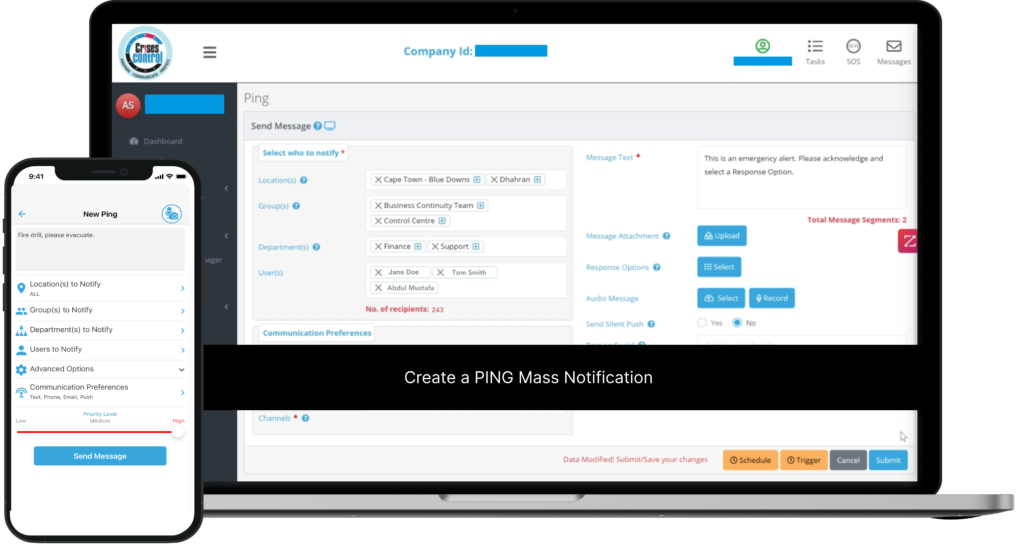
2. Automated Incident Management and Escalation
In many organisations, response teams waste valuable time manually notifying senior management and coordinating efforts. Mass Notification Software automates this process, ensuring:
- The right teams are mobilised without delay
- Incident status updates are shared in real-time
- Unresolved issues escalate automatically to senior decision-makers
Crises Control’s Incident Management Module provides a structured response plan, and automatic escalation ensures senior management is informed if issues persist. By automating incident response, tech companies eliminate unnecessary delays, allowing them to resolve issues quickly.
3. Integration with Disaster Recovery and Business Continuity Plans
When an incident occurs, teams need immediate access to predefined response plans. Mass Notification Software integrates seamlessly with Disaster Recovery Software and Business Continuity Software, ensuring that:
- Response plans are securely stored in the cloud and accessible anytime
- IT teams can activate disaster recovery steps instantly
- Incidents are documented for audit and compliance purposes
The Incident Plan Builder within Crises Control allows companies to create, store, and execute response plans. Secure cloud storage ensures documents are always accessible, and automated workflows ensure recovery steps begin immediately. This structured approach ensures services are restored faster.
4. Proactive IT Monitoring and Early Warnings
Rather than waiting for an outage to occur, companies can use predictive analytics and real-time monitoring to spot potential issues before they escalate. Mass Notification Software integrates with IT systems to provide:
- Early warning alerts for performance issues
- Automated triggers when systems detect failures
- Detailed analytics to identify recurring vulnerabilities
Crises Control seamlessly integrates with IT monitoring tools to provide real-time alerts, and customisable notifications ensure teams focus on high-priority threats. By identifying risks early, businesses can prevent downtime before it even happens.
5. Fast Response to Cybersecurity Threats
Cyberattacks, such as ransomware, data breaches, and DDoS attacks, can cripple tech companies. During an attack, communication must be immediate and secure.
Crises Control helps by:
- Sending real-time threat notifications to IT security teams
- Automating incident workflows to ensure compliance with security policies
- Alerting employees to phishing attempts and other security advisories
- A fast response limits damage and speeds up recovery, reducing the impact of cyberattacks on your business.
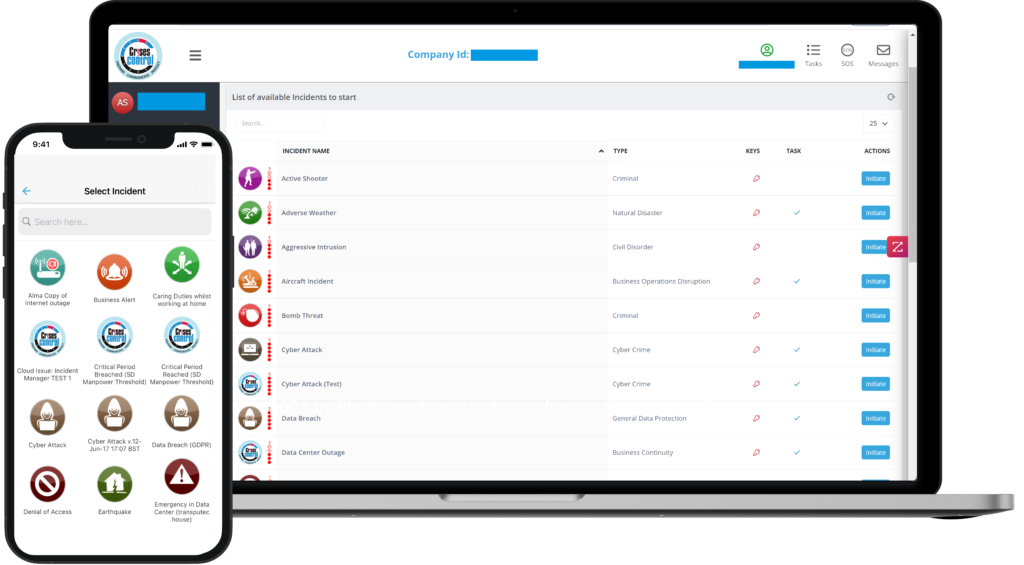
Interested in our Incident Management Software?
Customise your Crisis Incident Management Software to meet your specific needs with our flexible tools & stay connected and informed during the crisis and incident management process
Best Practices for Implementing Mass Notification Software
To maximise the effectiveness of Mass Notification Software, tech companies should:
- Automate Alerts: Reduce manual delays by setting up automated notifications.
- Customise Communication: Configure different alert levels for various incidents.
- Run Regular Drills: Train IT teams to respond efficiently and calmly.
- Integrate with IT Systems: Connect alerts with monitoring tools to detect issues early.
- Keep Stakeholders Informed: Ensure customers and internal teams receive timely updates.
Conclusion: Don’t Let Downtime Disrupt Your Business
Downtime is a significant business risk, but fast, efficient communication can make all the difference. Mass Notification Software ensures that IT teams, executives, and customers receive critical updates instantly, reducing disruption and improving response times.
Crises Control provides a comprehensive incident management platform that helps businesses remain operational even during a crisis. By automating incident response and improving communication, companies can restore services faster and minimise downtime.
Don’t wait for the next outage to affect your business. Contact us today for a free personalised demo of Crises Control and see how we can help your company reduce downtime.
Request a FREE Demo
